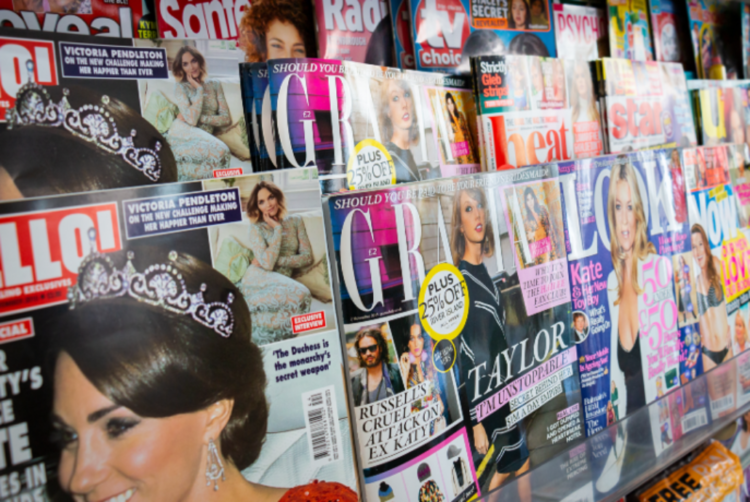Consumer ABCs: circulations drop as readers turn to quality

Print and digital magazine circulations largely receded in 2022. As pandemic lockdowns lifted and life returned to a (new) normal, many magazines that were beneficiaries of Covid-era lockdowns saw declining circulation. A number of major and growing titles, however, remained resilient.
Five key takeaways
>> A small number of home-interest titles retained or grew circulation, as despite the return to post-pandemic normalcy, consumers remained interested in hobbies such as gardening and home improvement. Market leader The Garden increased its print circulation by 10% in 2022 while other gardening magazines saw a decline in circulation, implying a consolidation of consumers toward a smaller number of preferred titles.
>> News & current affairs magazines like market leader The Economist generally saw print circulations drop at faster rates than digital subscriptions increased. Fortnightly print-only title Private Eye bucked the trend however, growing its circulation 4.4% to 248,133.
>> Men’s and women’s lifestyle magazines generally performed better than other segments, with titles such as HELLO!, Vogue, Women & Home, Wired, and BBC Science Focus increasing their digital circulations.
>> All TV listings saw declines in total circulation in a continuation of 2021’s trend; however, market leader TV Choice still retains a total circulation of 972,869.
>> Hearst UK titles suffered poor performance across several segments. Previous top-performing men’s lifestyle magazine Men’s Health was been superseded by Condé Nast’s GQ this year. Hearst UK saw leadership turnover toward the end of 2022, appointing a new CEO and head of clients.
‘Flight to quality’
Despite the continued general reduction in print circulations across the magazine industry, earlier YouGov data this year found that UK audiences generally still prefer reading their favourite magazines in print. This was predictably more common among older consumers, with younger individuals moving toward digital experiences.
According to Future’s commercial director Dave Randall, continued appreciation for print among consumers has caused print to remain central to marketing strategies.
“Print can communicate a brand’s identity and creative in unique ways and plays a vital part in large-scale partnerships,” Randall told The Media Leader.
He noted that the overall recessionary economic environment in 2022 resulted in a market contraction that has affected the advertising industry as a whole. “Whenever this happens, you tend to see a flight to quality,” he said, adding that “regardless of the economic outlook, marketers want to always focus on specialist content as it provides them value when times are tough.”
Bauer Media’s CEO of UK publishing Chris Duncan echoed Randall’s description, saying of the latest ABC data: “These set of results demonstrate the robust performance of our portfolio of brands despite the challenging market conditions that our industry faced in 2022.”
The Media Leader understands that such “challenging market conditions” include the knock-on effects the cost-of-living crisis has had on supply chains and consumer behaviour, and how advertisers may react to changes in purchasing power in-turn.
Inflationary pressures hit print publishers hard over the past year. The cost of paper soared during 2022 (though it has since come down), requiring publishers to seek more efficient distribution and circulation strategy, place more focus on core products, and look to increase cover prices despite potential drawbacks in circulation numbers. Future, for example, tried to strike a balance, raising the price of its largest TV magazine, What’s on TV, by £0.02 last year, compared to increases of £0.06 in previous years.
“We always have our consumers front of mind when needing to make any cost adjustments, especially when we are facing a cost-of-living crisis,” said Randall. “Cover prices have changed but Future recognises the financial pressure on consumers today and has decelerated cover prices.”
The reconsideration of distribution strategies provides an additional opportunity for publishers to look into their sustainability practices by seeking to not only improve business efficiency, but also clean up supply chains and reduce waste.
‘Maintaining the momentum of lockdown growth’
Natalie Grant, display group investment director at Publicis media agency Zenith, reflected that there were a number of positives to take away from the latest consumer ABC data, even if many titles saw circulation declines.
“Several special interest titles, such as car and sport publications, have again seen increases in print, showing consumers still enjoy quality and expert content about their passions, while TV listings continue to sell in huge numbers and subscriptions remain strong for many top titles, maintaining the momentum of lockdown growth.”
Grant added that a number of digital editions of major magazines, including lifestyle and luxury titles across many publishers, saw strong performance.
Read a full breakdown of the figures for titles in each category:




